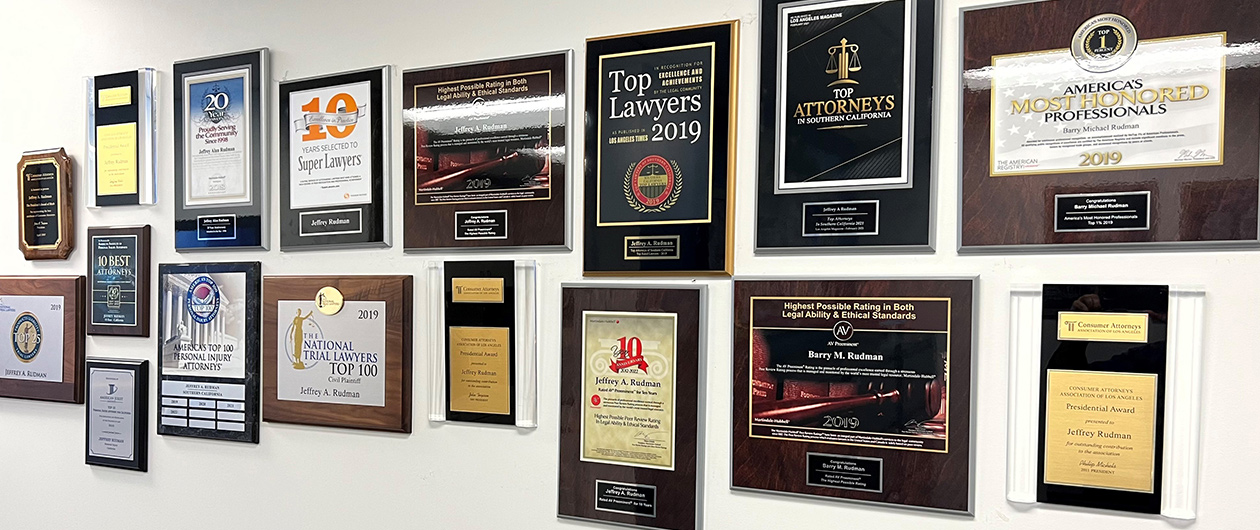Dangerous Conditions of Public Property
Claims for Injuries on Property Owned or Maintained by a Public Entity
California's Government Code, Section 835 allows a public entity or government agency to be liable for an injury caused by a dangerous condition on its property so long as the injured party meets certain requirements in reporting and establishing the claim. Dangerous Conditions of Public Property may include:
- A drastic drop at the edge of a highway
- A stop sign obscured by tree branches
- A poorly maintained road that has crumbled away
- A failure to erect a median barrier on a freeway
- A lack of street signs or warnings to reduce speed due to a sharp curve in a roadway
- A malfunctioning traffic signal at an intersection
- A sidewalk raised by tree roots
- A pot hole in a government owned parking lot
- A defective gate on a school playground
The Rudman Law Firm, APC practices solely in the area of personal injury. With over 75 years of combined legal experience, our lawyers have the skill and know-how to navigate the many procedural and legal issues unique to Dangerous Condition of Public Property cases. With an office in Encino, we regularly represent clients throughout Southern California in injury claims against public entities and government agencies.
Proving Dangerous Condition of Public Property Cases
In order to prevail in an injury claim based on a theory that a dangerous condition existed on government property, a person must prove that:
- the government or public entity owned or controlled the property;
- the property was in a dangerous condition;
- the dangerous condition presented a reasonably foreseeable risk that the type of incident would occur;
- the negligent or wrongful conduct of the government or public entity's employee, while he or she was acting in the scope or his or her employment, created the dangerous condition,or the government or public entity had notice of the dangerous condition for a sufficient period of time to have been able to protect against it
After establishing that the property was in fact owned or controlled by a government agency, the injury claimant must show that the property constituted a dangerous condition. Dangerous is defined as creating a substantial risk of injury to members of the general public when the property is used with reasonable care and in a reasonable foreseeable manner. If the condition only creates a minor risk of injury, it will not be considered a dangerous condition. For example, a slab of sidewalk raised by a tree root by only ½" has been characterized by some courts as a "trivial defect" and not considered to be a dangerous condition. Once a condition has been established as dangerous, it must be proven that the government entity created it, knew about it, or should have known about it. Our attorneys regularly request records from government entity's public works departments to attempt to establish these elements.
Government Defenses and Immunities
Often, potential Dangerous Condition of Public Property cases can be thwarted due to certain defenses and immunities that prevent a government entity from being liable for certain conditions or acts of its employees. Some of these potential defenses or immunities include:
- Natural conditions of unimproved public property (Gov. Code §831.2)
- Conditions created by reasonable acts or omissions (Gov. Code §835.4(a))
- Reasonable acts or omissions to correct (Gov. Code §835.4(b))
- Weather conditions affecting streets and highways (Gov. Code §831.1)
- Immunity for harm caused by plan or design of property (Gov. Code §830.6))
A careful analysis of these potential defenses and immunities is imperative.
Government Tort Claim Filing Requirements
In most cases, a lawsuit for money or damages against a government or public entity (or its employees acting in the course and scope of their employment) cannot be filed unless and until a timely "Government Tort Claim" has been filed against that entity. A "Government Tort Claim" must meet certain requirements with regard to how and when it is presented. The failure to timely file such a claim pursuant to the requirements imposed by law may forever prevent an injured person from filing a law suit or seeking recovery. Generally, the claim must be presented not later than six (6) months after the occurrence of the last fact essential to the cause of action (usually, but not always, the date that the wrongful act or injury occurred). There are some limited circumstances in which a claim can be made after the six-month deadline.
The Rudman Law Firm, APC Can Help with Your Dangerous Condition Claim.
Our Los Angeles personal injury attorneys at The Rudman Law Firm, APC will provide you with a free consultation and case evaluation when you call our Encino office (818) 769-6969 or toll free at (844) 478-3626 / (844) 4RUDMAN.

